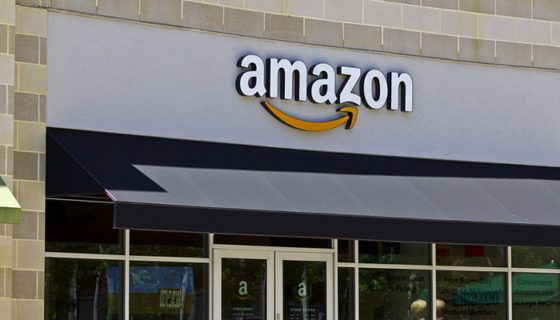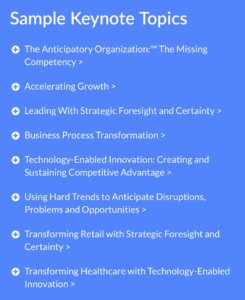The high number of retail executives and owners who think that the good, old days of brick-and-mortar retail are behind us amazes me; and if you were to ask them to name the one company that has caused the largest number of retailers to close up shop, they would say that it’s Amazon.
Now, as they say, turnabout is fair play. Internet behemoth Amazon now plans to dive headfirst into the grocery store market. In so doing, Amazon is not merely diversifying, but employing several of the key principles of an Anticipatory Organization.
From a Virtual Giant, Reinventing Brick-and-Mortar Stores
Anyone who has shopped on Amazon’s website is well aware that the company has long offered food and grocery products of all sorts. More recently, the company augmented that with Amazon Prime Fresh, a subscription home grocery delivery service.
News broke in late October that the e-retailer hopes to open 2,000 Amazon Fresh grocery stores in the U.S. within the next 10 years, making Amazon the fourth-largest grocer in the nation, by number of locations. According to varied sources, Amazon will kick things off by opening 20 stores over the next couple of years as a pilot program.
Alongside that, Amazon expects to experiment with several different store concepts. One concept is a “click and collect” store, where customers can pick up groceries–within a prearranged two-hour window–that they previously ordered online. The second is similar to a traditional grocery store. There are additional plans to open drive-in locations specific to sales of produce, milk and dairy products. There, Amazon Fresh members will reportedly have their online orders delivered to their cars using license plate reading technology to speed up wait time.
The overall program is intended to compete directly with Wal-Mart, both online, and in brick-and-mortar venues. The difference in food sales between the two companies is staggering. While Amazon’s current grocery and food operations are but a small slice of the company’s overall activity, Wal-Mart’s account for some 20 percent of U.S. grocery spending.
The Role of Anticipatory Thinking
While Amazon’s choice to go head-to-head with Wal-Mart may smack of mere competition—often a death knell in a climate characterized by exponential change—the company’s strategy reflects several important components of my Anticipatory Organization Model™
One is the company’s attention to influencing Soft Trends related to health. As the Soft Trend toward increasing obesity continues to be a significant issue, Americans are increasingly taking more proactive approaches to their health—including making better dietary choices, and taking control by cooking at home more often. An emphasis on fresh and healthy food options will allow Amazon (and others) to have a positive influence on that trend.
But perhaps even more interesting is Amazon’s use of integrating the old with the new—a salient principle of the Anticipatory Organization Model. As I’ve noted for a number of years, the arrival of a new product or technology doesn’t necessarily mean a death knell for those that preceded it. Rather, greater value can be achieved by integrating both the old and the new, taking advantage of the best features that each can offer.
Clearly, Amazon is following that strategy with its varied grocery and food shopping options. While offering newer shopping and delivery options, Amazon is also addressing that segment of the market that still prefers a more traditional shopping model. Greater range of choice also falls in line with research that suggests that fewer shoppers now target one grocery store as their primary destination, choosing instead to buy at several different types of stores.
Nor is Amazon’s interest in brick-and-mortar locations limited to groceries. Earlier this year, CEO Jeff Bezos said that he wanted to open 300 to 400 bookstores. The company is also opening dozens of pop-up stores with which to showcase its own products, like the Kindle and Echo family of products.
Whether you’re a traditional shopper who enjoys wandering up and down the aisles or a consumer for whom efficiency is everything, Amazon’s integration of the old and the new represents yet another bit of anticipatory thinking from one of the largest and most powerful disruptors in existence.
Daniel Burrus has been trusted by leaders from Fortune 500 Companies, the Pentagon and Heads of State to deliver a message that accurately predict future trends and identify game chaning opportunities before the competition. See some of Dan’s Recent Keynote Speeches below:








Comments